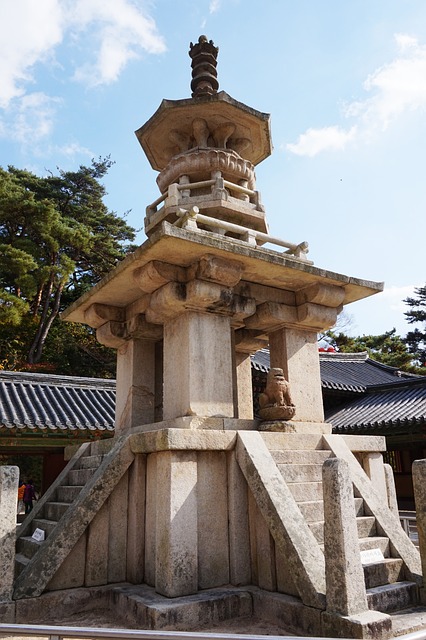In the heart of East Asia lies South Korea, a country that harmoniously blends ancient traditions with cutting-edge modernity like a well-mixed bibimbap. This land is a treasure trove of cultural heritage, where every palace has a story, and each temple whispers tales of the past. Let’s embark on a journey through time, exploring the majestic palaces, serene temples, and vibrant traditions of South Korea. And remember, while traversing this historical landscape, it’s okay to occasionally confuse your Joseons with your Jeosons, as long as you’re ready for a cultural adventure.

A Royal Affair: The Grand Palaces of Seoul
The heart of South Korea’s royal history beats in its palaces, magnificent structures that have withstood the test of time (and numerous invasions and reconstructions).
Gyeongbokgung Palace: The Jewel of Joseon Dynasty
Gyeongbokgung, the largest of the Five Grand Palaces, stands as a testament to the architectural ingenuity and historical depth of the Joseon Dynasty. With its imposing gates, expansive courtyards, and the majestic backdrop of Bukhansan Mountain, visiting Gyeongbokgung is like stepping into a period drama – minus the dramatic plot twists. Don’t miss the changing of the guard ceremony; it’s like the changing of the guard at Buckingham Palace, but with more colorful costumes and significantly less British weather.
Changdeokgung Palace: A UNESCO World Heritage Site
Changdeokgung, often considered the most beautiful of Seoul’s palaces, is renowned for its harmonious integration with the natural landscape. The Secret Garden, a jewel within the palace grounds, is a place of such tranquility it could soothe even the most troubled soul or at least provide a stunning backdrop for your next profile picture.
The Spiritual Sanctuaries: Temples That Touch the Soul
Beyond the royal residences, South Korea’s spiritual essence is captured in its temples. Nestled in mountains, forests, and cities, these temples offer a serene escape and a glimpse into the country’s Buddhist traditions.
Bulguksa Temple and Seokguram Grotto
Located in Gyeongju, the ancient capital of the Silla Kingdom, Bulguksa Temple, together with the Seokguram Grotto, forms a religious architectural complex of exceptional significance. It’s like the dynamic duo of spiritual sites, with Bulguksa’s Dabotap and Seokgatap pagodas offering Instagram-worthy symmetry, and Seokguram Grotto presenting a serene stone Buddha that gazes eternally over the sea. It’s a place where even the most devout Instagrammer might forget to take a selfie, captivated by the tranquility.

Jogyesa Temple: Buddhism in the Heart of the City
In the bustling heart of Seoul lies Jogyesa Temple, a spiritual oasis amid urban chaos. This temple is not just a place of worship but a vibrant center for cultural events, including the Lotus Lantern Festival, which lights up Seoul with a sea of lanterns. The festival is so visually stunning, it could make Las Vegas look like it needs to step up its neon game.
Folk Villages and Living History
To truly understand South Korea’s cultural heritage, one must also explore its folk villages, where history comes alive, and traditional crafts, homes, and lifestyles are preserved.
Hahoe Folk Village: A Journey Back in Time
Hahoe Folk Village, a UNESCO World Heritage site, offers a peek into the Joseon Dynasty’s rural life. Here, traditional thatched houses are surrounded by picturesque landscapes, and residents live according to age-old customs. It’s like a historical theme park, where the only rides are ox carts, and the only cotton candy is traditional Korean sweets.
Embarking on a cultural expedition through South Korea reveals more than just historical sites; it unveils the soul of a nation that has navigated the streams of time with grace and resilience. From the grandeur of its palaces to the serenity of its temples and the lively traditions of its folk villages, South Korea offers a rich tapestry of experiences that connect the past with the present.
In every stone of Gyeongbokgung, in the silent prayers of Jogyesa, and the vibrant festivals that light up the country, lies the unbreakable spirit of Korea. It’s a land where history is not just remembered; it’s celebrated, lived, and breathed. So, pack your bags, bring an open heart, and maybe a hanbok for those special photo ops, as you dive into the rich cultural heritage of South Korea. And remember, amidst the ancient and the sacred, it’s perfectly fine to indulge in a little K-pop on your journey – after all, what’s a trip through time without a soundtrack?

